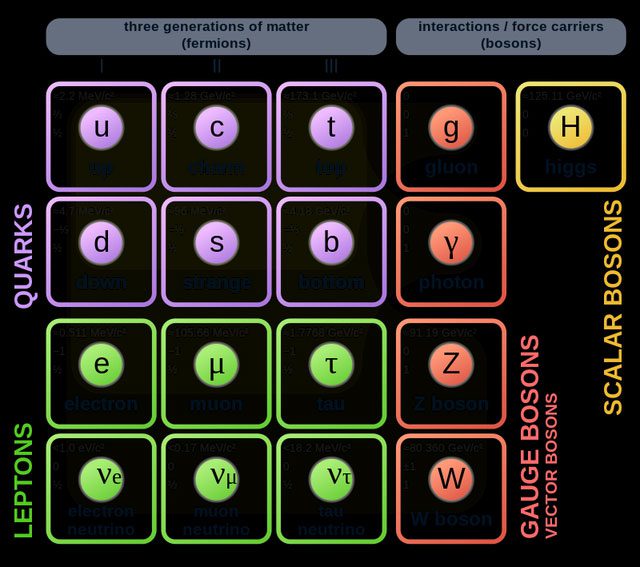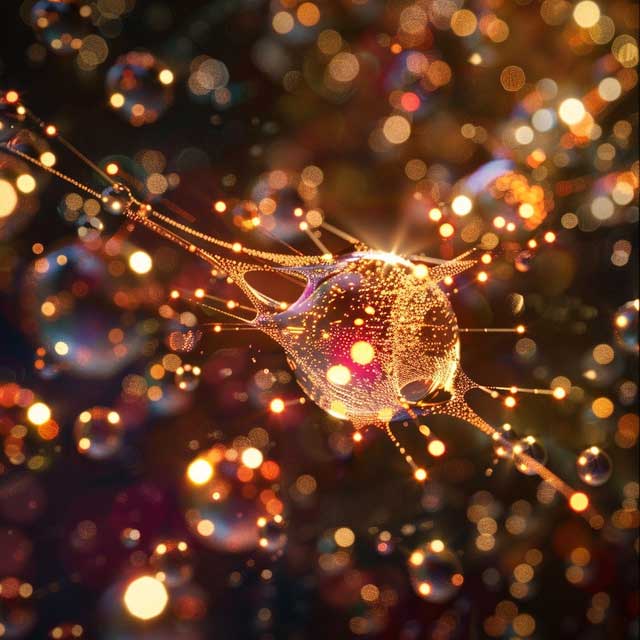After decades of effort and observation of billions of particle events, a team of physicists has made a startling conclusion.
In particle physics, the Standard Model, originally referred to as “Standard Model”, is the theory that describes three of the four fundamental forces we know. It serves as a solid foundation for understanding forces and the elementary particles that make up our universe. One can think of the Standard Model as the periodic table of particle physics.

Standard Model of Elementary Particles – (Image: Wikimedia Commons).
The Standard Model categorizes all subatomic particles, also known as elementary particles. The particles in the model are divided into fundamental fermions, which include six types of quarks and six types of leptons (with the electron being one of them); and fundamental bosons, which include the Higgs boson (often referred to as the “God Particle”), photon representing electromagnetic force, gluon representing the strong force, and W and Z bosons representing the weak force.
The four fundamental forces mentioned include:
- Gravitational Force
- Electromagnetic Force
- Weak Force – the interaction mechanism between subatomic particles
- Strong Force – the fundamental interaction that binds quarks into particles like protons, neutrons, and other hadrons.
The Standard Model theory describes the interactions between the electromagnetic force, strong force, and weak force, but does not include gravitational force.
The Standard Model predicts the existence of many particles; however, there are still many mysterious particles in nature that evade the curiosity of the scientific community. Among these is the “glueball”, a type of particle composed entirely of gluons – the particles that mediate the strong force. It can be said that a glueball is a particle made entirely from force.
For a long time, physicists have been trying to prove the existence of this mysterious particle. In the latest development, physicists at a particle accelerator facility in Beijing have found traces of the glueball. Their decades-long research effort has discovered a new particle that decays from the J/ψ meson, which they tentatively named X(2370).

Illustration of Particle Collision – (Image: AI).
A “hidden bead” in plain sight, created from force
The key difference between glueballs and other particles lies in their composition and the interactions they represent. In other hadrons, such as protons and neutrons, gluons act as the “glue” that transmits the strong force between quarks. In contrast, glueballs exist in a pure gluon state, composed solely of gluons. The unique interactions between gluons make glueballs special.
Detecting and studying glueballs has been challenging because, based on known knowledge, scientists believe they would mix with other quark-containing particles and decay into familiar particles. This makes them difficult to detect in experimental settings.
However, since it became operational in 2008, the Beijing Spectrometer III project – conducted at the Beijing Electron-Positron Collider – has recorded 10 billion events in which J/ψ mesons form.
The J/ψ mesons are particularly unstable, with a short lifespan, rapidly decaying into other particles, including X(2370).

Illustration of Glueball X(2370) – (Image: AI).
The X(2370) particle exhibits characteristics that could identify it as a glueball: it is electrically neutral, has unusual pairing properties, and possesses a mass consistent with previous predictions of glueballs. This new discovery also aligns with predictions made by the field of quantum chromodynamics, which is used to study the strong force interactions between quarks via gluons.
According to researchers in China, the anomaly rate in their statistics, or in other words, the probability of detecting the new particle, is merely a 0.00006% error in the system. The scientific report has been published in the journal Physical Review Letters.
Nevertheless, the physics community still has reasons to be skeptical. The production rate of the X(2370) does not match earlier predictions regarding glueball formation. Physicist and science journalist Ethan Siegel suggests that it is possible that X(2370) represents a special particle state rather than a specific particle.
Siegel believes further research is necessary to confirm the true nature of X(2370); however, he considers the existence of X(2370) to be “the clearest evidence ever known for the existence of glueballs.”
He added: “If glueballs do not exist in nature, then the Standard Model may have issues. However, if glueballs do indeed exist, then X(2370) may be the first [glueball] to reveal itself to humanity.”


















































